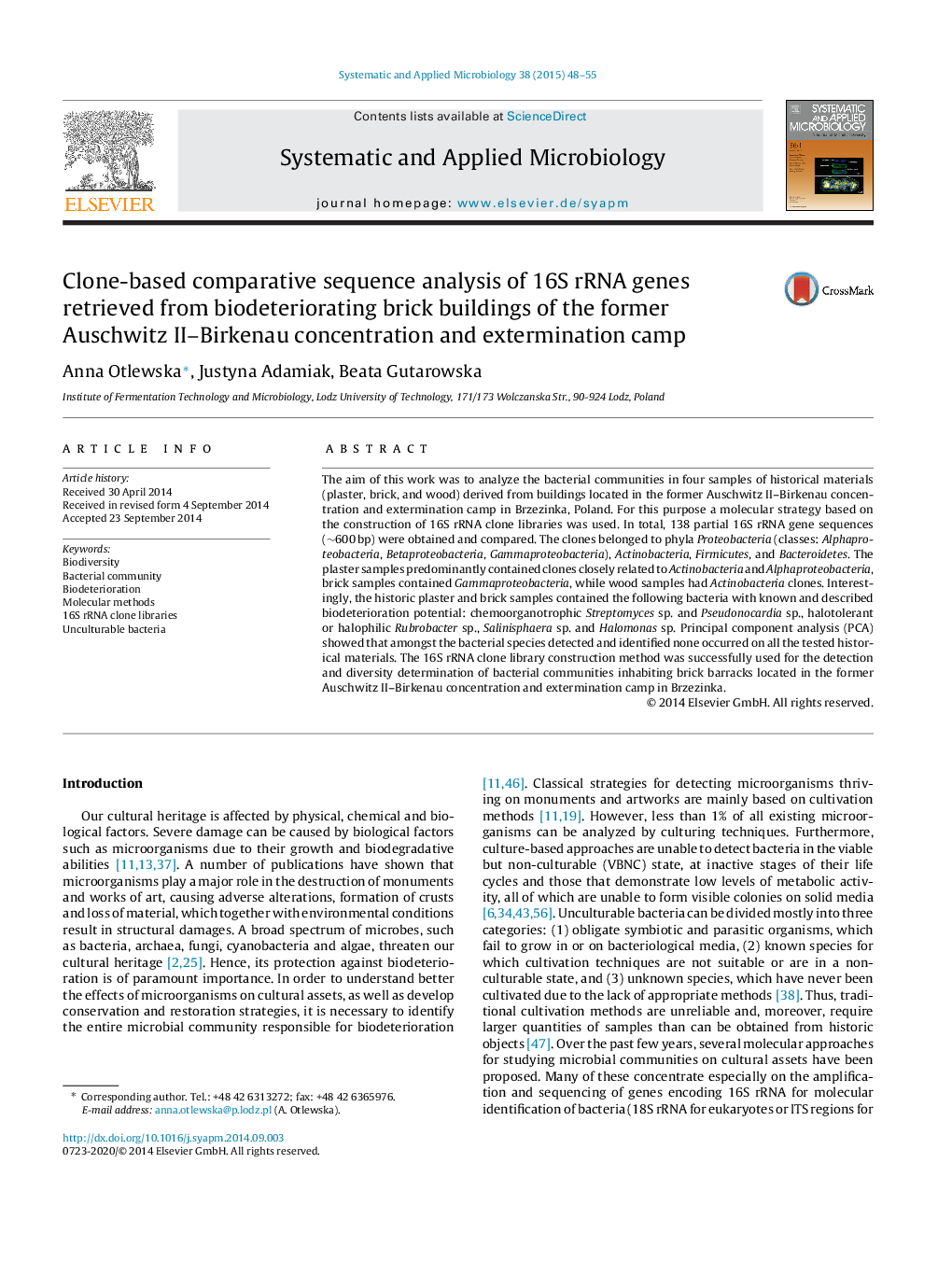| Article ID | Journal | Published Year | Pages | File Type |
|---|---|---|---|---|
| 2063040 | Systematic and Applied Microbiology | 2015 | 8 Pages |
The aim of this work was to analyze the bacterial communities in four samples of historical materials (plaster, brick, and wood) derived from buildings located in the former Auschwitz II–Birkenau concentration and extermination camp in Brzezinka, Poland. For this purpose a molecular strategy based on the construction of 16S rRNA clone libraries was used. In total, 138 partial 16S rRNA gene sequences (∼600 bp) were obtained and compared. The clones belonged to phyla Proteobacteria (classes: Alphaproteobacteria, Betaproteobacteria, Gammaproteobacteria), Actinobacteria, Firmicutes, and Bacteroidetes. The plaster samples predominantly contained clones closely related to Actinobacteria and Alphaproteobacteria, brick samples contained Gammaproteobacteria, while wood samples had Actinobacteria clones. Interestingly, the historic plaster and brick samples contained the following bacteria with known and described biodeterioration potential: chemoorganotrophic Streptomyces sp. and Pseudonocardia sp., halotolerant or halophilic Rubrobacter sp., Salinisphaera sp. and Halomonas sp. Principal component analysis (PCA) showed that amongst the bacterial species detected and identified none occurred on all the tested historical materials. The 16S rRNA clone library construction method was successfully used for the detection and diversity determination of bacterial communities inhabiting brick barracks located in the former Auschwitz II–Birkenau concentration and extermination camp in Brzezinka.
